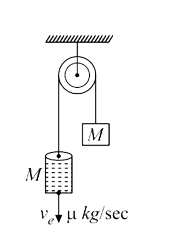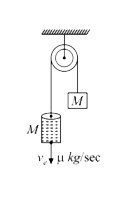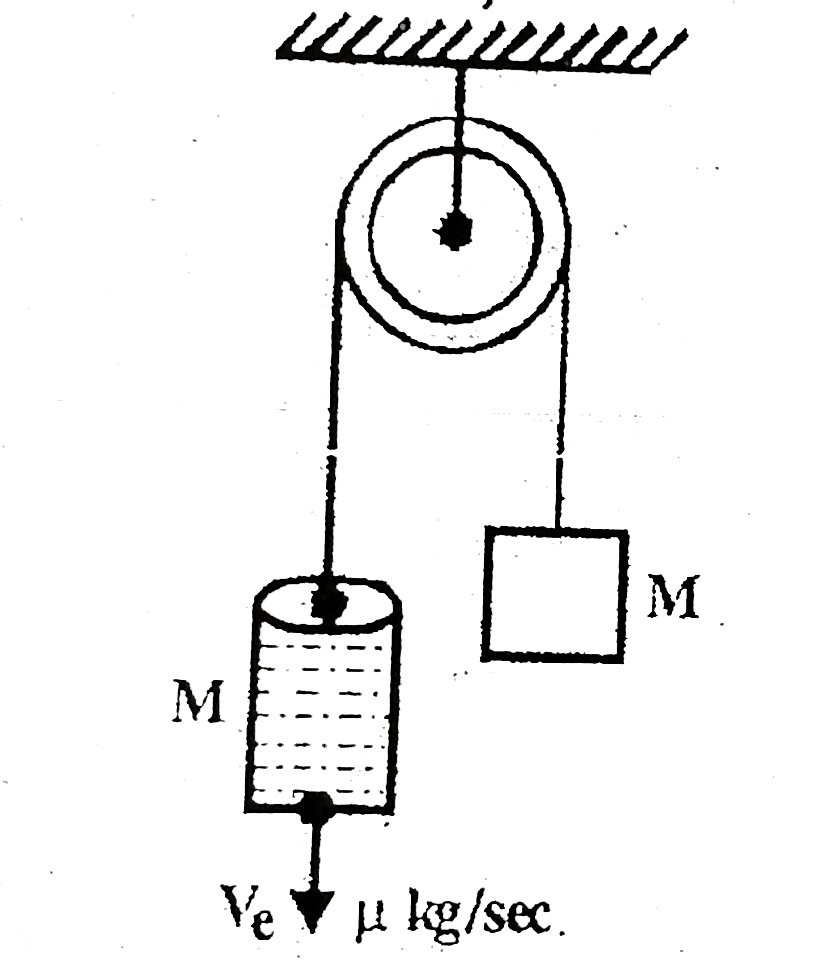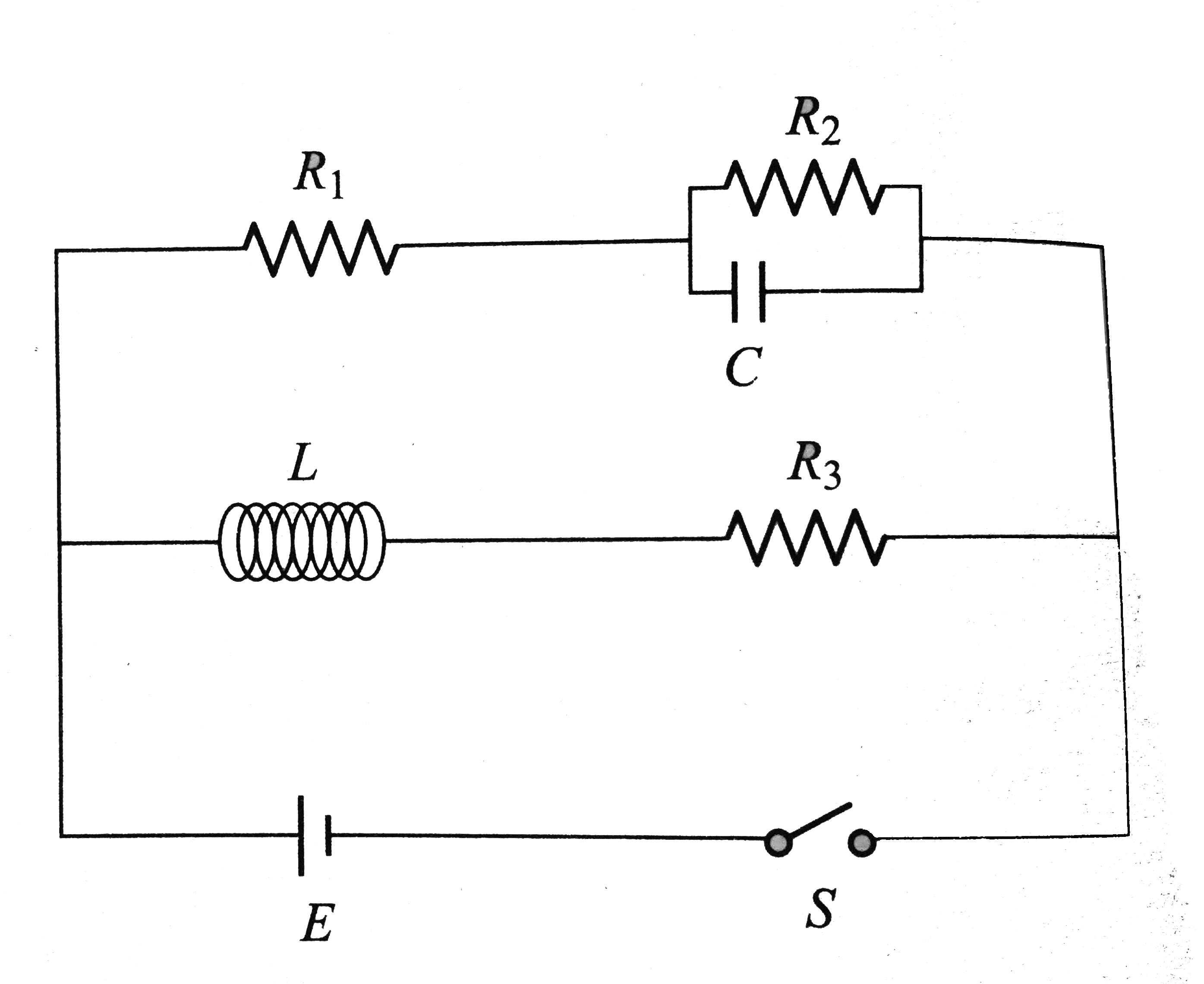Velocity of water flow in downward direction relative to cylindrical tank is ve. Acceleration at any time t will be: (where μ is rate of change in mass at any time t) 
The correct Answer is:A
For block Mg−T=Mdvdt..........(1)
For cylindrical tank, T=μvg−(M0−μt)g=(M0−μt)dvdt......(2)
From (1) and (2), we get
Mg+μve−(M−μt)g=(2M−μt)dvdt........(3)
(μve+μ>)=(2M−μt)dvdt........(4)
dvdt=μ(ve+>)(2M−μt) ∴dvdt=μ(ve+>)(2M−μt)

Topper's Solved these Questions
Similar Questions
A block of mass M and cylindrical tank which contains water having small hole at bottom, which is closed initially (total mass of cylinder + water is also M), are attached at two ends of an ideal string which passes over an ideal pulley as shown. At t=0 hole is opened such that water starts coming out of the hole with a constant rate μkg/s and constant velocity Ve relative to the cyliender. aSccleration of the block at any time t will be : (Given that string always remains taut.)
 View Solution
View SolutionIf velocity of particle is given by v=2t4, then its acceleration (dvdt) at any time t will be given by..
View SolutionThe acceleration of a particle moving along a straight line at any time t is given by a = 4 - 2v, where v is the speed of particle at any time t The maximum velocity is
View SolutionFor the previous question, the acceleration of the particle at any time t is :
View SolutionA block of mass m slides 0n a frictionless table. It is constrained to move inside a ring of radius R . At time t=0 , block is moving along the inside of the ring (i.e. in the tangential direction) with velocity v0 . The coefficient of friction between the block and the ring is μ . Find the speed of the block at time t .
 View Solution
View SolutionAn electron of mass m and charge e initially at rest gets accelerated by a constant electric field E. The rate of change of de-Broglie wavelength of this electron at time t ignoring relativistic effects is
View SolutionSwitch S is cloesd in the circuit at time t=0. Find the current through the capacitor and the inductor at any time t
 View Solution
View SolutionVelocity of a particle at any time t is v=(2ˆi+2tˆj)m/s. Find acceleration and displacement of particle at t=1s. Can we apply v=u+at or not?
View SolutionA hemi-spherical tank of radius 2 m is initially full of water and has an outlet of 12cm2 cross-sectional area at the bottom. The outlet is opened at some instant. The flow through the outlet is according to the law v(t)=0.6√2gh(t), where v(t) and h(t) are, respectively, the velocity of the flow through the outlet and the height of water level above the outlet and the height of water level above the outlet at time t, and g is the acceleration due to gravity. Find the time it takes to empty the tank.
View SolutionThe total force acting on the mass at any time t, for damped oscillator is given as (where symbols have their usual meanings)
View Solution

